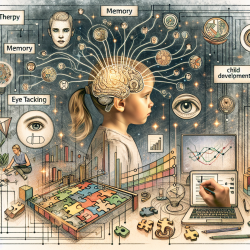Introduction
The evolution of tonal organization in music is a profound reflection of cognitive processes that mirror our perception of reality. The research paper titled "Evolution of tonal organization in music mirrors symbolic representation of perceptual reality. Part-1: Prehistoric" by Aleksey Nikolsky provides an in-depth exploration of how musical pitch acts as a form of cognition, influencing cultural and cognitive development. This blog post will delve into the key findings of the research and discuss how practitioners, particularly those in speech-language pathology and music therapy, can apply these insights to improve therapeutic outcomes for children.
Understanding Tonal Organization
Tonal organization in music is not just an artistic construct; it is a cognitive framework that reflects the mental processes of a culture. Nikolsky's research highlights that tonal organization has evolved through various stages, each characterized by distinct methods of integrating musical tones into a cohesive auditory-cognitive unity. This evolution parallels the development of human consciousness and cognition, offering a unique perspective on the interplay between music and cognitive processes.
Implications for Practitioners
For practitioners in speech-language pathology and music therapy, understanding the cognitive underpinnings of tonal organization can enhance therapeutic approaches. Here are some key takeaways:
- Cognitive Consonance: Music's ability to create "cognitive consonance" can be leveraged in therapy to facilitate emotional regulation and cognitive processing in children. By incorporating music that aligns with a child's cognitive and emotional state, therapists can promote a sense of harmony and stability.
- Cross-Cultural Insights: The research underscores the universal features of musical perception shared by all humans, providing a foundation for cross-cultural therapeutic interventions. Practitioners can draw on these insights to design culturally sensitive therapy sessions that resonate with diverse populations.
- Developmental Stages: Understanding the stages of tonal development can inform the design of age-appropriate musical interventions. For instance, early childhood interventions can focus on simple tonal structures that align with a child's developmental stage, gradually introducing more complex tonalities as cognitive abilities mature.
Encouraging Further Research
While Nikolsky's research provides a comprehensive framework for understanding tonal organization, it also highlights the need for further exploration. Practitioners are encouraged to engage in research that examines the application of these insights in therapeutic settings. By contributing to the growing body of knowledge, practitioners can help refine and enhance therapeutic techniques that leverage the cognitive power of music.
Conclusion
The evolution of tonal organization in music offers valuable insights into the cognitive processes that shape our perception of reality. For practitioners in speech-language pathology and music therapy, these insights can inform the design of effective interventions that harness the cognitive and emotional power of music. By embracing a data-driven approach and engaging in ongoing research, practitioners can continue to improve therapeutic outcomes for children.
To read the original research paper, please follow this link: Evolution of tonal organization in music mirrors symbolic representation of perceptual reality. Part-1: Prehistoric










